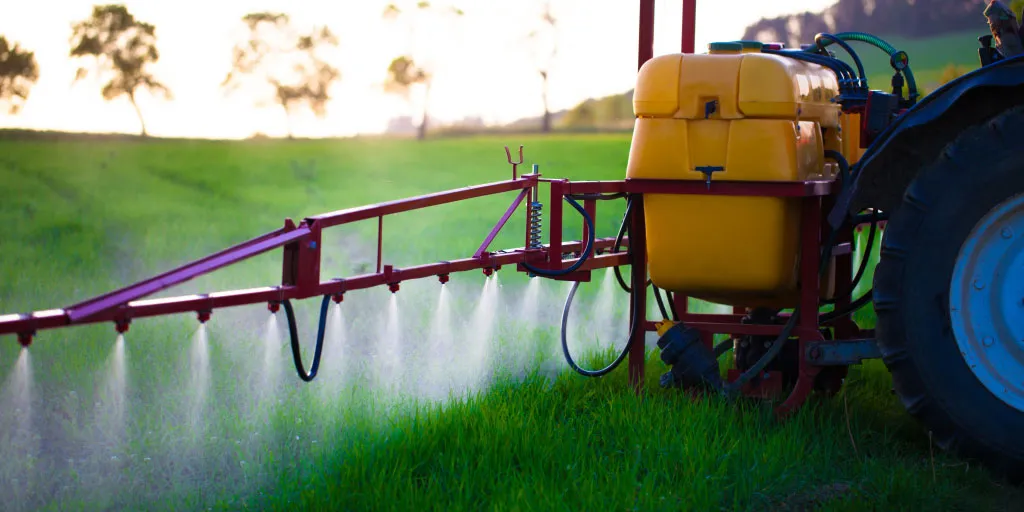
Pest and disease management are critical components of sustainable agriculture, as they directly impact crop yields, farmer livelihoods, and food security. Traditional methods of pest and disease control often rely on chemical pesticides, which can have adverse effects on human health, the environment, and non-target organisms. However, advancements in agricultural science and technology have led to the development of innovative approaches for pest and disease management that are more sustainable, effective, and environmentally friendly. So In this blog post, we will explore some of the key innovations in pest and disease management in agriculture and their potential implications for sustainable food production.
Biological Control:
Biological control is a sustainable pest management strategy that utilizes natural enemies, such as predators, parasites, and pathogens, to suppress pest populations and reduce crop damage. This approach harnesses the ecological interactions between pests and their natural enemies to maintain pest populations at manageable levels. Biological control agents, such as predatory insects, parasitic wasps, and microbial biopesticides, offer an environmentally friendly alternative to chemical pesticides and can be integrated into pest management programs to enhance crop protection.
Integrated Pest Management (IPM):
Integrated Pest Management (IPM) is a holistic approach to pest management that combines multiple strategies, including cultural, biological, mechanical, and chemical control methods, to minimize pest damage while reducing reliance on chemical pesticides. IPM emphasizes the use of environmentally friendly practices, such as crop rotation, habitat manipulation, and pest monitoring, to prevent pest outbreaks and maintain ecosystem balance. By integrating various pest management tactics, IPM promotes sustainable pest control solutions that are cost-effective, environmentally sound, and socially acceptable.
Genetic Resistance:
Genetic resistance is a key component of pest and disease management in agriculture. For involving the development of crop varieties with inherent resistance to specific pests and diseases. Plant breeders use traditional breeding techniques or during genetic engineering approaches to introduce resistance genes into crop plants. By enhancing their ability to withstand pest attacks and reduce the need for chemical pesticides. Genetically resistant crop varieties offer an effective and sustainable means of pest control, providing long-term protection against pests and minimizing yield losses.
Precision Agriculture Technologies:
Precision agriculture technologies, such as remote sensing, geographic information systems (GIS), and global positioning systems (GPS), enable farmers to monitor crop health, detect pest and disease outbreaks, and target interventions more precisely. These technologies allow for site-specific management of pests and diseases, optimizing the use of resources such as water, fertilizers, and pesticides while minimizing environmental impacts. By enabling real-time decision-making and customized pest management strategies. The precision agriculture technologies contribute to more efficient and sustainable pest control practices.
Biopesticides and Plant Extracts:
Biopesticides are naturally occurring substances derived from plants, microbes, or other organisms. That have pesticidal properties and can be used to control pests and diseases in agriculture. Plant extracts, such as neem oil, pyrethrum, and garlic extract, contain bioactive compounds that repel or inhibit pest activity and can be formulated into biopesticides for crop protection. Microbial biopesticides, such as Bacillus thuringiensis (Bt) and Beauveria bassiana. These are microbial agents that target specific pests and pathogens, offering effective and environmentally friendly alternatives to chemical pesticides.
Smart Farming Solutions:
Smart farming solutions, including sensor-based technologies, drones, and automated pest monitoring systems. That enable farmers to monitor crop health, detect pest infestations, and implement timely interventions more efficiently. These technologies provide real-time data on pest populations, environmental conditions, and crop health parameters. Allowing farmers to make data-driven decisions and respond proactively to pest and disease threats. By improving the accuracy and timeliness of pest management interventions. Smart farming solutions enhance crop protection while minimizing input costs and environmental risks.
Climate-Smart Pest Management:
Climate-smart pest management involves adapting pest control strategies to changing climatic conditions. And mitigating the impacts of climate change on pest and disease dynamics. Climate change affects pest behavior, distribution, and abundance, leading to shifts in pest populations and increased incidence of pest outbreaks. Climate-smart pest management practices, such as diversifying cropping systems, adjusting planting dates, and selecting climate-resilient crop varieties. For help of farmers adapt to changing environmental conditions and minimize the risk of pest and disease damage.
Conclusion:
In conclusion, innovations in pest and disease management in agriculture offer promising solutions for sustainable crop protection. By enhancing food security, and minimizing environmental impacts. From biological control and integrated pest management to precision agriculture technologies and smart farming solutions. These innovations provide farmers with effective tools to manage pests and diseases while reducing reliance on chemical pesticides. By adopting innovative pest management strategies, farmers can enhance crop productivity. Reduce input costs, and promote environmentally sustainable agricultural practices that contribute to a more resilient and food-secure future.